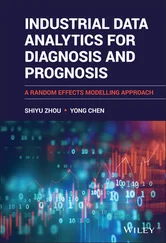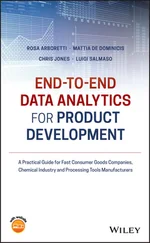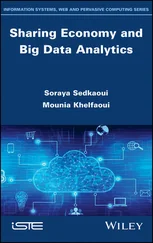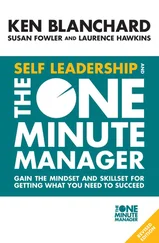1 ...8 9 10 12 13 14 ...17 Increased job satisfaction and full resource actualization can occur when employees focus on tasks that enhance value for the organization, rather than on mundane, redundant, and low value-added processing steps and activities. By reducing the proportion of time that individuals spend on the manual tail performed outside of systems (data staging, cleansing, enriching, reformatting, and processing), relative to the time spent performing value-added analysis to generate actionable business insights, employees can more readily create value. Organizations benefit through increased process stability and productivity, while employees benefit from increased focus, increased engagement, and true process ownership. In some cases, advanced analytics can be applied to use machine learning and artificial intelligence models for decision-making. New applications of advanced analytics emerge daily and are limited only by the collective imagination, but in large spreadsheet processing plants, “small” automation efforts aimed at improving control and realizing efficiencies and cost savings one process at a time will come to the fore. Self-service data analytics tooling can enable these efforts and will largely be the focus of this book.
Introduction to Data Analytics Tooling
A decade or more into the data analytics era, many readers will have heard reference to a number of data analytics disciplines and technologies. Some of them have highly technical and sexy sounding names, while others may sound vaguely familiar, if lackluster. In the following pages, we will provide a very high level introduction to a handful of key data analytics technologies, with which managers should be familiar. They all form the living backdrop against which specific analytics applications have emerged. Only a small subset of these are considered to be self-service data analytics tools, but all of these have been successfully demonstrated to add value, when applied appropriately to use cases with adequately rich benefits at scale. In the following sections, we will introduce some of the data analytics disciplines and technologies that have matured and risen to prominence. Note that these abbreviated introductions only scratch the surface of the suite of emerging technologies marching under the broad banner of data analytics.
One of your authors was a houseguest in a luxury Manhattan apartment roughly 15 years ago, in 2005. He recalls being shown around and impressed that previously stand-alone items were now connected and controlled by the internet. One specific appliance that caught his eye was the refrigerator, which featured a small TV monitor on its door. The homeowner explained that with his “connected” fridge, he was able to maintain an inventory of what necessities were on hand and could easily make a list of the items he needed to purchase. He could even place an online order to have those items delivered. This was an amazing step forward at that time.
Now, any number of items in our homes are connected to the internet – smart TVs, thermostats, security cameras and home alarms, door locks and garage door openers, lightbulbs, a variety of Amazon Alexa and Google Home hubs, stereos and speaker systems, and far more. Looking forward another 15 years, we predict that readers of future editions of this book may not even recall the age when these connected “things” were not in our homes and relied on to provide the weather forecast, to recommend items for our shopping lists, and to consume streaming podcasts, music stations, and video content. Clearly, we are interacting with and consuming data at an unseen level, but on the flip side, we are generating consumer data at an explosive clip.
The “internet of things” (IoT) is one of the factors that is driving the data explosion. All of these connected items are generating colorful data on consumer choices, our buying patterns, and our individual routines. When do we check the weather? When do we leave for work and typically return at home after our workday? When do we turn up the heat or cool our homes down? How many times did the garage door go up and down throughout the day? What movement was captured and logged near the back door on our connected security camera? What do we order when we have our meals delivered? If you consider the vast array of high-velocity data types and the number of observations being collected, it is easy to see how the term “Big Data” was coined. How your organization mobilizes to connect to this data for logistical and client relationship benefits will set the tone for success in the next decade. How you, as an individual, can adopt emerging technologies to get on board in the new digital landscape will position you for personal success along this time frame.
Cloud Storage and Cloud Computing
We have already described that data is being captured at a rate never before seen. Some say that today, companies like Amazon, Google, and others know what we need before we do. They capture data surrounding how we shop, what we buy, our online browsing patterns, our spending patterns, and the likely order of our transactions. One consequence of harnessing the enterprise utility of customer data is that data volumes have multiplied and exploded over the last 10 to 15 years. In many cases, enterprises require data storage that far exceeds what can be accommodated with their own hardware in their own facilities. Further, the number of operations performed on the data has increased commensurately. However, with advances in connectivity, the availability of capacious networks, increased speed of information transmission, and advances in data security, companies may elect to upload their data to data centers outside of their organization in the cloud, to be administered by cloud service providers (CSPs).
Some of the largest CSPs, such as Amazon Web Services, Microsoft Azure, IBM, Google Cloud Platform, Salesforce, Alibaba, and Oracle, offer not only storage but computing, security, and enterprise software services. It is easy to see that there is a virtual ecosystem to be managed, including not only Big Data but also the hardware, specialty software, and analytical methods required to unlock its value. This ecosystem includes other ancillary components, including security and encryption, computer processing, and a host of tools and solutions to transform supply chains and to enhance customer experience. Companies must face the decision as to whether to continue to build and grow their own technological capabilities in-house or to subscribe to one or several focus-built and ready-made cloud services available in the marketplace, or perhaps to consume services from several CSPs, which is an increasingly likely choice.
Since the advent of cloud computing, many companies no longer deem it necessary to purchase licenses and install software for dozens of required programs on every individual connected machine across an enterprise. Instead, every computer on a connected network can subscribe to and run software that is housed in the cloud to process data that is stored in the cloud, assisted by the expertise of CSPs. A user may only pull down fully processed information and outputs, as required for local consumption. It is important to introduce the cloud, given some of the largest service providers are packaging up tools and expertise surrounding some of the subject technologies of this book – artificial intelligence, machine learning, and analytics, to name a few. Let's begin by providing an introductory overview of artificial intelligence.
Artificial intelligence (AI) is one of the broadest and most all-encompassing of the data analytics references the reader will hear. It is the over-arching theory and science of development of computer systems and processes that can consider facts and variables to perform processes that typically require human intelligence and the uniquely human capability of learning new things and applying them. Any number of sciences and disciplines are brought to AI such as mathematics, computer science, psychology, and linguistics, among many others. One need only picture the ways that humans think, interact, and understand one another to perform daily tasks to see the breadth of fields, disciplines, and specialty branches of learning that must be brought to bear.
Читать дальше












